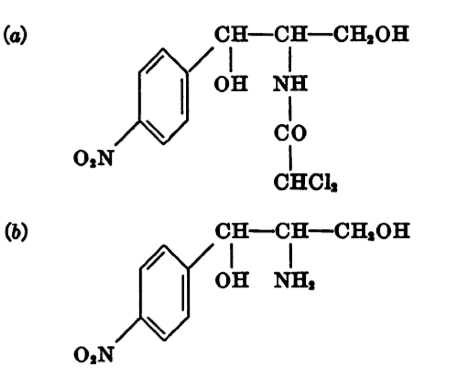Introduction | History | How It Works
Uses | Typhoid Fever | Side Effects
Synthetic Production | U.S. and the West
Chloramphenicol was the first antibiotic to be produced synthetically in large quantities, making it cheaper than other antibiotics and widely available. Its affordability made it a lucrative asset for many third world countries affected by typhoid.
In chemistry, the synthesis of a molecule is the formation of a complex substance from simpler compounds. Due to its simple structure, chloramphenicol is simple to synthesize.
In his trials in synthesizing chloramphenicol, Gottlieb used a variety of compounds and amino acids, including:
- p-nitrophenylserinol
- dichloroacetic acid
- leucine
- isoleucine
- methionine
- tryptophan
- glutamic acid
- norvaline
- threonine
- phenylalanine
Upon further experimentation, Gottlieb discovered that p-nitrophenylserinol was the best in stimulating antibiotic production.
In this image, the structure of chloramphenicol (a) is compared to the structure of p-nitrophenylserinol (b)
This video clip is a news piece discussing the reasons why Nigerian health officials have decided against the use of chloramphenicol to treat typhoid fever.

